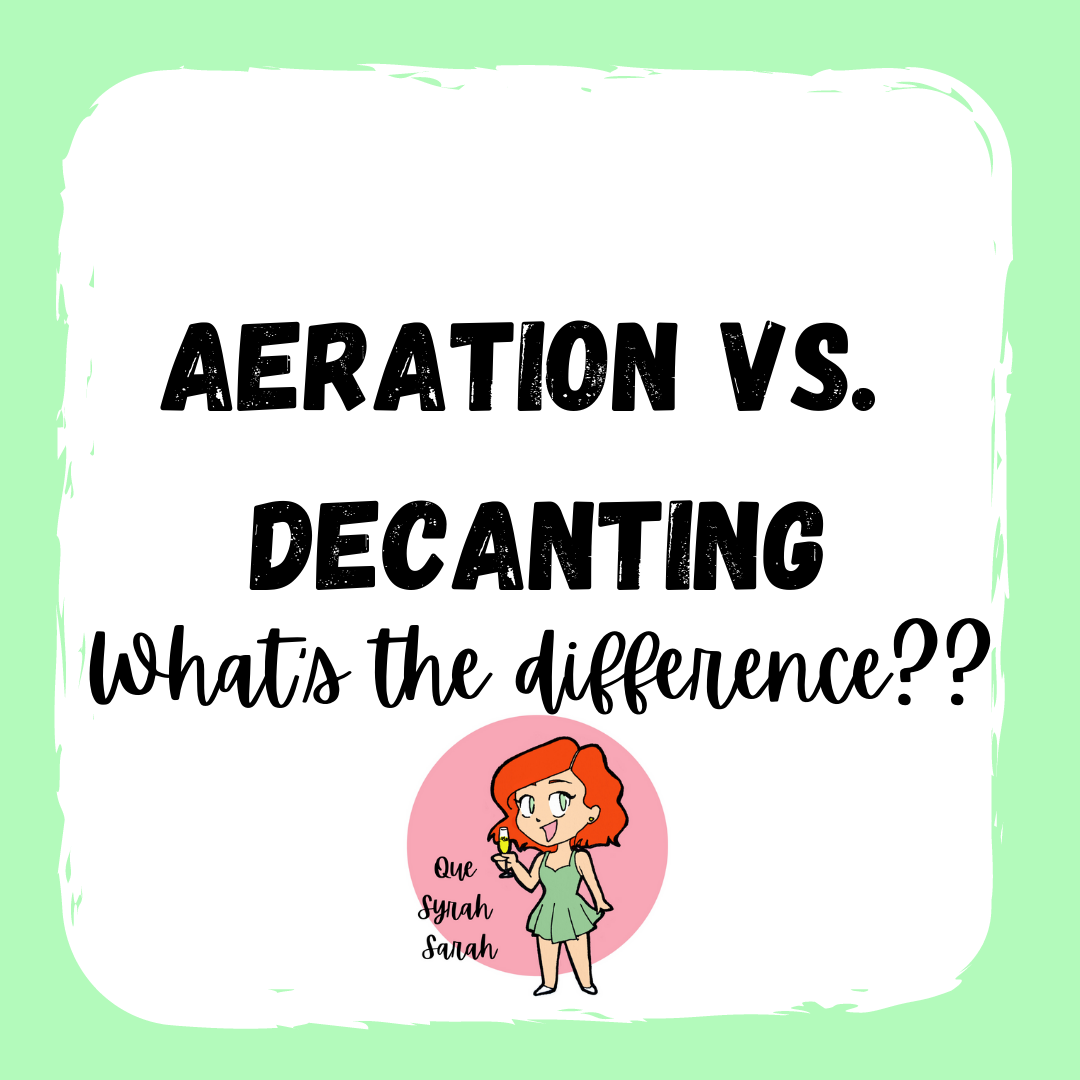
Aeration vs. Decanting: What’s the Difference?
Sometimes we see these two terms used interchangeably, but they do actually mean different things!
Here’s what you need to know in order to use them correctly.
PS. If you like any of the items I recommend below, the images are also Amazon links! If you make a purchase, I will receive a small commission that helps me continue to run this blog, but it won’t cost you anything extra.
Aeration
To aerate a wine is to force or speed up the chemical reaction that takes place when wine mixes with oxygen.
Too much oxygen is actually the enemy of wine, but just the right amount can do wonders.
You see, oxygen interacts with the other chemical components in wine (tannins, acid, colour molecules, etc.) and slowly breaks them down. That’s why wines that are build to age need to have a lot of these structural building blocks in order to last for years and years to come.
One of the reasons that corks are used to seal wine bottles is because their porous material allows for a very slow, controlled exchange of oxygen over time. Most bottles under screw cap aren’t designed to age, simply because they don’t facilitate this exchange.
It would seem then that we would want to reduce oxygen exposure as much as possible. So when should you aerate a wine?
Sometimes when you first open a bottle of big, bold red wine, it tastes like “too much”. Too acidic, too tannic, too overpowering to be enjoyable.
This is the perfect time to aerate. By forcing oxygen into the wine, you can help speed up that oxidizing process just enough for the components to smooth out and blend together.
There are a few different tools that can help you with this.
The first is a handheld aerator:

Hold this little fella over your wine glass and pour your wine through it. As it passes through the internal filter, it will aerate the wine and get rid of any pesky sediment.
Alternatively, there are also aerators that can be inserted directly into the bottle:
I personally prefer these to the handheld option, because it reduces the likelihood of spilt wine!
(Although, I have seen people double up and pour through BOTH if they are really desperate to make that bottle drinkable).
And you CAN actually use a decanter to aerate as well!

The wide base allows the wine to come into contact with as much oxygen as possible. To maximize the aerator effect, make sure you poor the wine slowly so that it hits the side of the glass (like pictured).
(Now, I’ve never seen anyone do this, but I suppose you could use all three if you were really desperate….)
One of my personal faves? You can actually get a decanter with a removable aerator/filter!
This one is not only beautiful, it also comes with a drying stand and cleaning beads, which just makes life sooooo much easier!
Decanting
So if we can use a decanter to aerate, then what’s decanting?
Decanting is to slowly pour out a liquid without disturbing the sediment that has accumulated in the bottle. This is especially important for older wines, or wines that weren’t filtered at the winery (the label may state “unfined, unfiltered”).
As we discussed earlier, when wines age the oxygen interacts with the other chemical components in the wine and alters them. One of the side affects of this is that certain compounds like tannins and colour molecules actually become heavier, and end up floating to the bottom of the bottle. This is what creates sediment in aged wines.
It won’t hurt you, but as anyone who has ever accidentally drank it can attest, sediment tastes NASTY.
Nobody likes a gritty wine.
And nobody wants those flavours getting swirled back up into the rest of the wine and potentially tainting the whole bottle.
So when pouring an older bottle of wine, follow these tips:
- hand the bottle gently – try to move it around as little as possible and keep the liquid inside still
- if it does get jostled around a bit, let it sit for a few minutes before you attempt to pour it so the sediment can settle back to the bottom
- pour the wine into the decanter slowly, keeping an eye on how much is left in the bottle
- stop pouring BEFORE you get to the end – leave the final few ounces in the bottle with the sediment
Either of the above style of decanter will suffice for this, but if your drinking a fancy aged wine, why not show off with a fancy decanter too?












-
-
3 years
Tagged 2018 soplo, garnacha, rafael cambra, Red wine, soplo